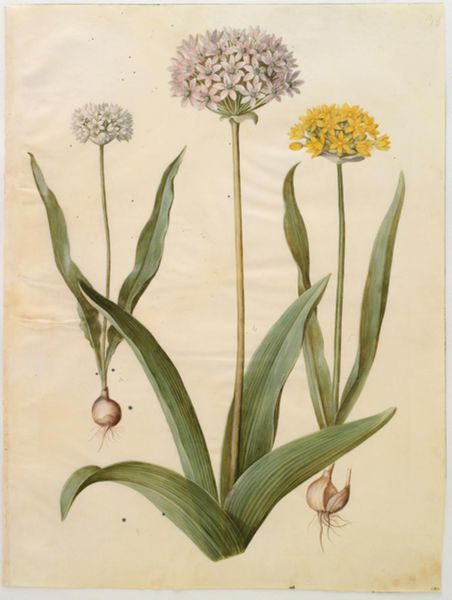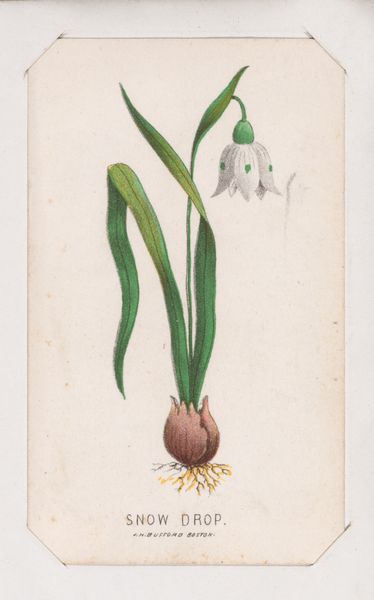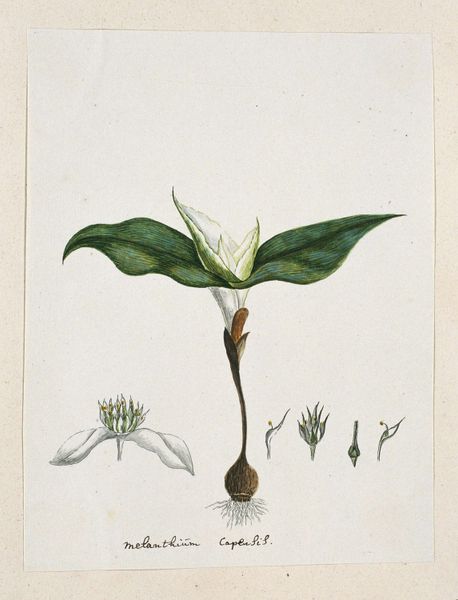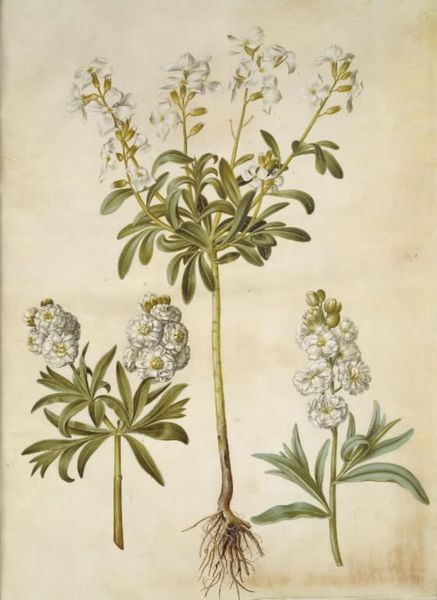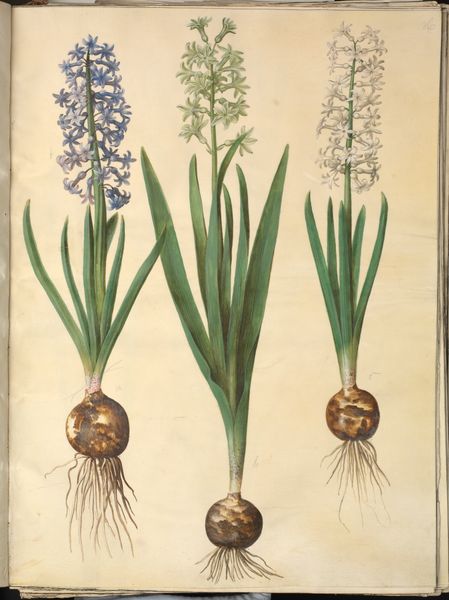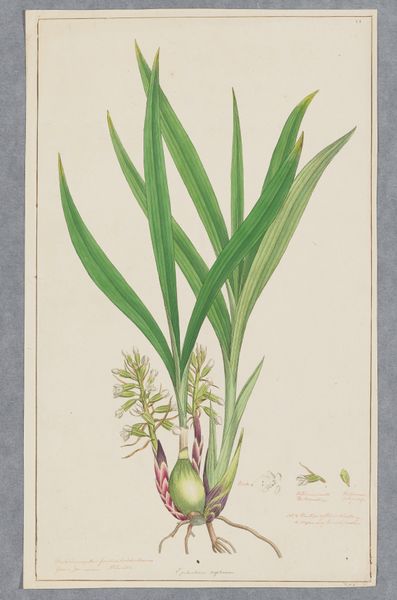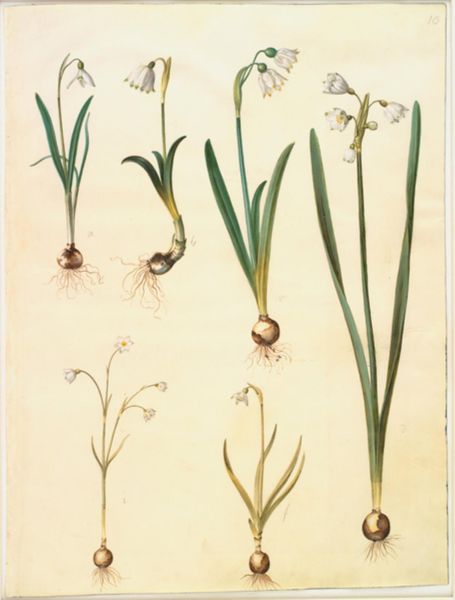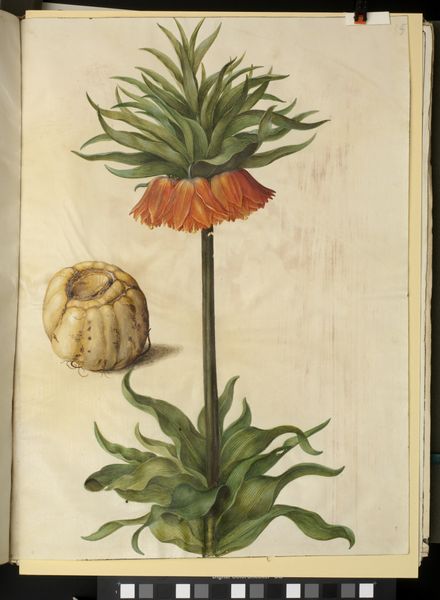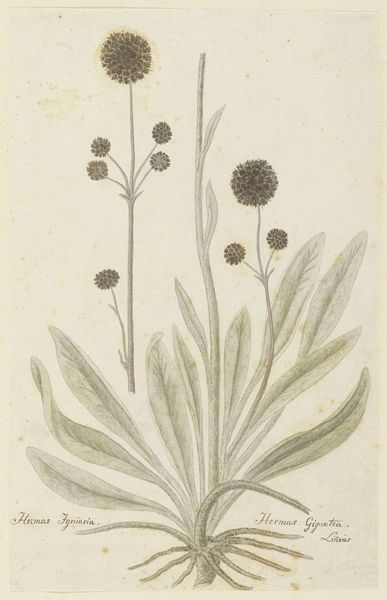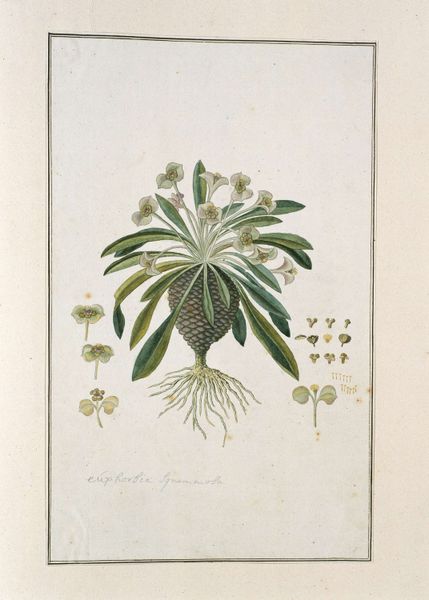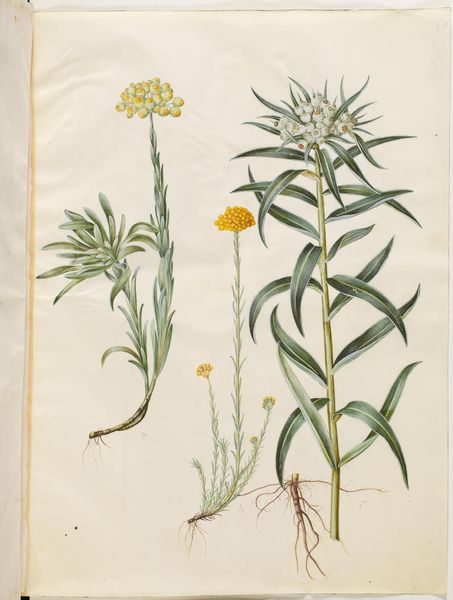
drawing, coloured-pencil, gouache, watercolor
#
drawing
#
coloured-pencil
#
water colours
#
baroque
#
gouache
#
watercolor
#
coloured pencil
Dimensions: 505 mm (height) x 385 mm (width) (bladmaal)
Curator: Oh, how lovely, it's like peering into a meticulously kept botanical journal. There's such delicate precision to it! Editor: Indeed. We're looking at "Scilla peruviana," or giant squill, rendered in watercolor, gouache, and colored pencil by Hans Simon Holtzbecker sometime between 1649 and 1659. What strikes me immediately is the bulb. It feels so earthy, almost vulnerable beneath the flourish above. Curator: Yes, vulnerable! That's it. There's something so profoundly human about it, laid bare as it is, contrasting so dramatically with the explosion of ordered beauty above. Holtzbecker really captured the plant's life cycle in a single image, didn't he? From the hidden potential to its dazzling display. Editor: Precisely. And in a time defined by exploration and colonial expansion, these botanical illustrations were tools of power. They document and categorize, creating a visual archive that's both scientific and deeply implicated in imperial projects. It makes me think about ownership and knowledge. Who gets to name things, to claim them, to define their value? Curator: Hmm, yes. There's also a simple love of observation here. I find myself lost in the gradients of green in those leaves, or the way each tiny floret in the bloom has its own character. He's really trying to communicate the essence of the plant, don’t you think? To show us how magnificent even a common flower can be? Editor: I agree. And thinking of its current home here at the SMK, it makes you consider how images like this circulate, accruing new layers of meaning. Is it still tethered to its original context, or has it taken on a life of its own, speaking to contemporary concerns about biodiversity, conservation, and our relationship to the natural world? Curator: That's beautifully put. It does feel like a bridge between centuries, reminding us both of humanity's drive to classify and control, and of our inherent capacity to see beauty in the small, quiet moments. Thank you for bringing such fascinating perspectives. Editor: Thank you, this piece really makes you ponder art's many complex lives across time, and reminds us that images, even the most seemingly simple ones, hold immense power.
Comments
No comments
Be the first to comment and join the conversation on the ultimate creative platform.
